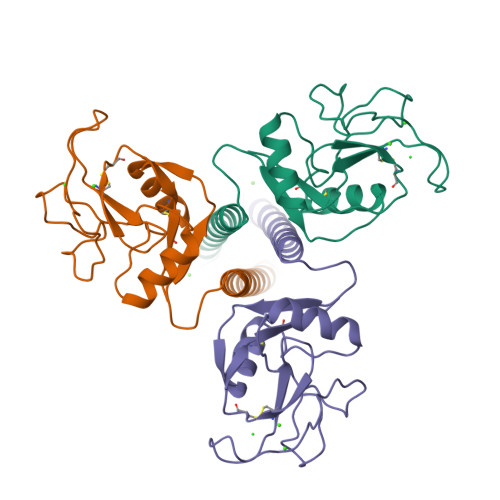Structural basis of galactose recognition by C-type animal lectins.
Kolatkar, A.R., Weis, W.I.(1996) J Biological Chem 271: 6679-6685
- PubMed: 8636086
- Primary Citation of Related Structures:
1AFA, 1AFB, 1AFD - PubMed Abstract:
The asialoglycoprotein receptors and many other C-type (Ca2+-dependent) animal lectins specifically recognize galactose- or N-acetylgalactosamine-terminated oligosaccharides. Analogous binding specificity can be engineered into the homologous rat mannose-binding protein A by changing three amino acids and inserting a glycine-rich loop (Iobst, S. T., and Drickamer, K. (1994) J. Biol. Chem. 269, 15512-15519). Crystal structures of this mutant complexed with beta-methyl galactoside and N-acetylgalactosamine (GalNAc) reveal that as with wild-type mannose-binding proteins, the 3- and 4-OH groups of the sugar directly coordinate Ca2+ and form hydrogen bonds with amino acids that also serve as Ca2+ ligands. The different stereochemistry of the 3- and 4-OH groups in mannose and galactose, combined with a fixed Ca2+ coordination geometry, leads to different pyranose ring locations in the two cases. The glycine-rich loop provides selectivity against mannose by holding a critical tryptophan in a position optimal for packing with the apolar face of galactose but incompatible with mannose binding. The 2-acetamido substituent of GalNAc is in the vicinity of amino acid positions identified by site-directed mutagenesis (Iobst, S. T., and Drickamer, K. (1996) J. Biol. Chem. 271, 6686-6693) as being important for the formation of a GalNAc-selective binding site.
Organizational Affiliation:
Department of Structural Biology, Stanford University School of Medicine, Stanford, California 94305, USA.




















